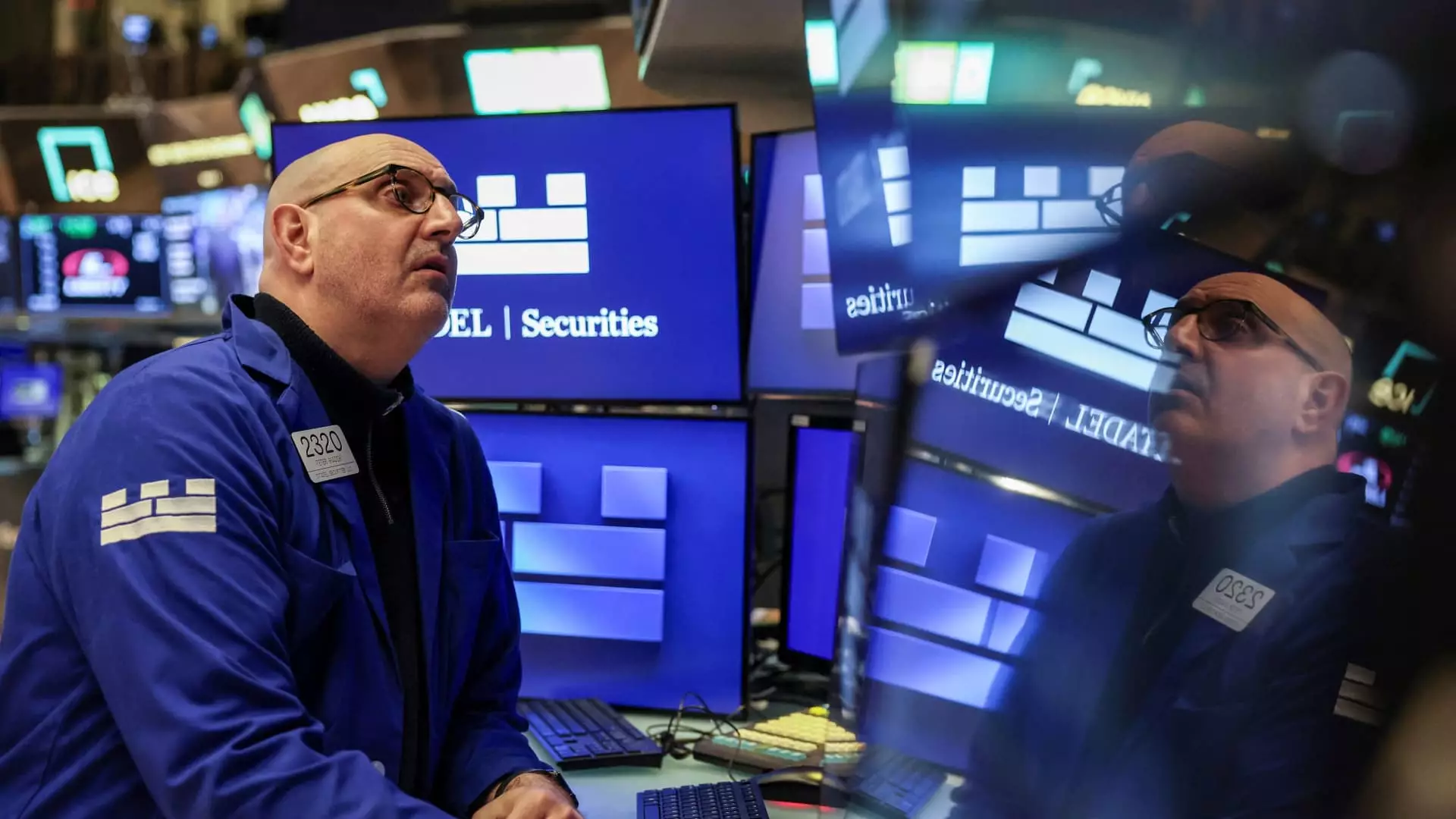As Wall Street stands at a precipice, the looming tariff announcements expected to debut on April 2 might seem like a potential lifeline. However, the reality is colored by skepticism and uncertainty. Navigating the chaotic financial landscape under President Donald Trump’s policies feels increasingly like walking a tightrope. An alarming state of volatility has ensnared the markets, with the S&P 500 already sitting over 8% below its record high and the Nasdaq Composite trailing by more than 13%. In a world characterized by constant fluctuations, these figures are not just numbers; they are indicators of investor anxiety fueled by unresolved trade issues.
The hope rests on the possibility that Trump’s announcement will clarify the murky waters of global tariffs. Yet, analysts such as J.P. Morgan’s Gabriela Santos caution that just a framework isn’t enough. Investors crave specifics to make informed decisions, and without them, the expected rally may quickly fizzle out. This sentiment resonates with many investors who recognize that clarity on tariffs could take time, leaving a choppy path ahead.
Market Instability: A Dangerous Game
The uncertainty surrounding tariff policies isn’t merely an abstract concern; it has tangible ramifications for the broader economy. Brett Ryan, a senior economist at Deutsche Bank Securities, warns about a “maximalist” tariff regime that may impose blanket tariffs on an array of nations with whom the U.S. has significant trade deficits. This approach, if fully realized, could raise the average tariff rate significantly, worsening the economic outlook. It poses the danger of increasing consumer prices, stalling growth, and even stirring fears of stagflation—the toxic cocktail of stagnant growth and inflation.
For investors who are increasingly skittish, any drastic uptick in tariffs is a source of dread, pulling down forecasts and creative thinking. Goldman Sachs has already adjusted its 2025 S&P 500 target, reflecting a prevailing pessimism that isn’t likely to dissipate quickly. The concerns are not merely about numbers but about the long-term direction of economic policy in an interconnected world.
The Weight of Expectation
Despite the negative landscape, there is a glimmer of historical hope among some investors. April has traditionally been a month of recovery, particularly for the S&P 500 when starting below its 200-day moving average. Oppenheimer’s Ari Wald cites an average gain of 2.5% during this month, alongside a 73% historical success rate. But such optimism feels misplaced when weighed against the scale of potential turbulence stemming from tariff talks. Investors should remain cautiously skeptical: the past may not hold the same promises as it once did.
Christopher Harvey from Wells Fargo has expressed a more constructive view, acknowledging the inherent risks while still clinging to the notion that equities could rebound. However, his assessment is tinged with caution. He highlights that the dynamics of tariff negotiations are complex and prone to abrupt shifts. The busy bureaucratic machines of governments aren’t known for swift resolutions, and any changes to tariffs could require significant deliberation, potentially extending into weeks or months.
Navigating the Uncharted Waters
One of the harsh lessons of our time is that clarity often remains an elusive dream for investors. The uncertainty surrounding the White House’s plans can be likened to navigating fog-covered terrain; obstacles emerge unexpectedly, complicating routes and testing resolve. Investors must accept this reality and prepare their portfolios accordingly. With many economists warning of a potential recession triggered by this trade debacle, the urgency to adapt cannot be understated.
The old adage “no news is good news” seems to be altered to “no news is bad news” in the context of tariffs. The mere announcement of initial frameworks will not suffice to quell fears. Without meaningful and actionable guidelines, the markets will likely remain jittery, caught in the clutches of indecision and trepidation. It’s not just a trade problem; it’s a situation that intertwines global economics with domestic priorities, making any resolution challenging.
The Call for Flexibility
In a world defined by trade tensions, adaptive strategies are essential. Investors seeking stability must remain vigilant, following the developments with a keen eye while being ready to pivot as situations evolve. Essentially, the uncertainty wrapped around tariff policies creates an environment conducive to both risk and opportunity.
Wall Street’s capacity for resilience will be tested rigorously in the days ahead. The understanding that markets are inherently unpredictable should be at the forefront of investor strategies. Depending on governmental revelations or upheavals, the road ahead appears fraught with challenges, yet it is also rich with the potential for shrewd and timely investment decisions amidst the chaos. Now more than ever, flexibility is key.

